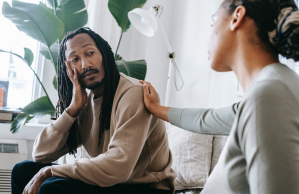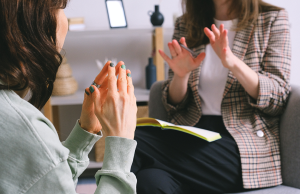September 11, 2001 was a tragic day in American history. When the terrorist attacks on the World Trade Center and the Pentagon happened, it shook the whole country. It was even worse for those who were there to witness it in person. Innocent bystanders, employees just trying to get to their jobs, parents on the way home from dropping their kids off at school, police, firefighters, people reading the morning newspaper—all affected by this tragic event.
Almost 3,000 people lost their lives that day. For the people who survived, the trauma lives on. Even after almost two decades since the incident, people are still struggling with post-traumatic stress disorder (PTSD). So, how do we continue to move on?
How the Pain of 9/11 Sticks with Survivors
Lila Nordstrom was a senior at Stuyvesant High School in Lower Manhattan in 2001 when the tragic event took place. She had no idea how much her life would change on that day. Although her PTSD has improved since the incident, she still struggles from time to time. “From the time I was 17 on, I couldn’t listen to an airplane overhead or a helicopter, or a car backfiring,” she recounted to The New York Times. “If I was in traffic and someone honked, it would lead to a protracted period of me panicking. It took a while for me to realize it was happening, and it took a while after that to realize it was 9/11-related.”
Depending on where the survivor was located during the 9/11 tragedy affects how long they may suffer from post-traumatic stress disorder. Studies show that those who lived near the World Trade Center have a higher risk of struggling with PTSD to this day. Additionally, things like alcohol consumption, a weak support system, a history of mental health issues, and low self-esteem all play a role in why survivors—almost two decades later—still battle negative side effects from 9/11.
What Is Post-Traumatic Stress Disorder?
After a traumatic experience, it’s normal for people to feel scared, sad, anxious, and disconnected. However, if those feelings of trauma aren’t addressed, you’re at risk of developing PTSD. The length of the battle varies from person to person, as does presentation. That said, symptoms are generally grouped into intrusive memories, avoidance, negative changes in thinking and mood, and changes in physical and emotional reactions. Here, they are explained further:
- Intrusive memories – unwanted memories of the event, flashbacks of the traumatic event, nightmares about the event, and severe emotional distress when you experience a stressor
- Avoidance – trying to avoid thinking or talking about the event and avoiding places, people, and things that remind you of it
- Negative changes in thinking and mood – negative thoughts about yourself, hopelessness, difficulty maintaining close relationships, feelings of detachment, lack of interest in once enjoyed activities, numbness, memory problems, and negative attitude.
- Changes in physical and emotional reactions – defensiveness, trouble concentrating, insomnia, feelings of guilt, self-destructive behavior
To overcome PTSD, it’s important to seek help. Sometimes it can feel impossible to deal with on your own. If you feel like you might still be struggling with PTSD because of 9/11, help is readily available in the form of therapy.
5 Effective Coping Strategies for PTSD
Recovery from PTSD unfortunately doesn’t happen overnight. To heal from the memories and trauma, it takes time, work, and a lot of patience. There are some steps you can take to cope with these feelings and anxiety to make it a little bit easier.
1. Get plenty of physical activity
Getting your body up and moving proves to have many positive effects on your mental health. When you work out, your brain releases endorphins that help improve your mood and overall outlook. Try:
- Spending time in nature by walking, hiking, camping, or riding bikes.
- Weight training, boxing, martial arts, or CrossFit.
- Dancing, yoga, Pilates, and other free-flowing movements.
- Running, jogging, or walking.
2. Tap into your creativity
Art allows people to take a much-needed break from thinking. Pick up a paintbrush and just let your mind takeover while you create something that feels right. It doesn’t have to be on the level of Picasso, so don’t put pressure on yourself. Working with clay, embroidery, creating a candle, and knitting are all other ways you can enjoy creating art.
3. Play with a pet
Playing with pets can lift your mood and help you feel less stressed. They can offer companionship without the pressure of having to talk or feel criticized. Animals also give you a way to have fun and be active. A big plus is their unconditional love. If you don’t have a pet, ask a friend or family member to spend some quality time with theirs. You can also try volunteering at a local animal shelter.
4. Live a healthy lifestyle
Getting enough sleep, relaxing when you need it, avoiding excessive alcohol, eating well, meditating—these are all ways you can start living a healthier lifestyle. You’ll feel better inside and out.
5. Consider going to therapy
As mentioned before, going to therapy can help alleviate symptoms of PTSD to get back to living the life you deserve. Licensed therapists and counselors have the training and experience to help you better understand your triggers as well as how to cope and overcome them. Also, they can provide you with the support and guidance you need to start living a happier, fuller life.
Coping with PTSD is hard. Especially when it’s directly linked to an extremely traumatic event that we are sure to be reminded of year after year, like 9/11. However, that doesn’t mean you need to live another two decades letting those intrusive thoughts and feelings rule your life. Start with these small changes and observe the large impact.











